Do you have a question about the Panasonic Viera TX-37LXD80A and is the answer not in the manual?
Safe handling of power cords, using correct power source, and avoiding modifications.
Avoiding liquids, foreign objects, unstable surfaces, heat, and proper stand use.
Precautions for children handling small SD cards.
TV standby function and warnings about placing equipment near the TV.
Guidelines for transporting the TV, keeping air vents clear, and cleaning.
Lists of included and purchasable accessories like remote and brackets.
Step-by-step guide for inserting batteries into the remote control.
Instructions for safely detaching the TV stand.
Steps for connecting an aerial to the TV for receiving broadcast signals.
Guide for connecting external devices like DVD recorders or VCRs.
Explanation of buttons, LEDs, and slots on the TV set itself.
Detailed explanation of all buttons on the remote control and their functions.
Connecting TV, selecting state/territory for auto tuning.
Choosing the appropriate picture setting (Home/Shop) during auto tuning.
Turning on the TV and selecting DVB or Analogue broadcast.
Ways to select programmes using information banner or TV Guide.
Functions like freezing picture and displaying subtitles during viewing.
How to view programme listings, event details, and select programmes.
Filtering content by type or selecting from favourite lists.
How to switch between different input sources for external devices like VCRs or DVD players.
Understanding FASTEXT, TOP, List modes and selecting teletext pages.
Revealing hidden data, adjusting contrast, and returning to TV.
Holding pages, displaying subtitles, and storing frequent pages.
Viewing TV and teletext in multi-window and watching TV during updates.
Steps to access and display the TV's main menu options.
How to select items, adjust values, and store settings in menus.
Accessing and controlling connected HDMI equipment via VIERA Link.
Overview of picture, sound, and setup configuration options.
Controlling equipment and adjusting picture quality settings.
Configuring audio modes, volume, surround sound, and speaker settings.
Managing programmes via Tuning Menu, service lists, and auto tuning.
Configuring system updates, VIERA Link, region, and time settings.
Steps to navigate to Setup menus for DVB-specific settings.
Updating software, selecting region, and adjusting daylight saving time.
Automatically updating or manually searching for software updates.
Setting the correct region and daylight saving time for accurate time display.
Steps to access Setup and then programme editing options.
Selecting DVB Favourites Edit or DVB/Analogue Service List for management.
Adding programmes to favourite lists using DVB Favourites Edit.
Hiding or deleting unwanted services using DVB/Analogue Service List.
Navigating through menus to reach the Tuning Menu options.
Selecting functions like Auto Tuning, DVB Manual Tuning, or Add New DVB Services.
Methods for automatically or manually retuning DVB/Analogue programmes.
Adding new services, checking signal conditions, and notification messages.
Steps to navigate to the "Shipping Condition" menu for resetting.
Resetting the TV to original condition and initialising auto tuning.
Navigating to the Input Labels menu via Setup.
Naming or skipping input terminals for easier selection.
Steps to connect a PC and select the PC input source.
Adjusting picture settings and resolution for PC display.
Connecting equipment with DVI output and adjusting position settings.
Inserting SD card, entering photo mode, and selecting photos.
Sorting photos, viewing details, and displaying operation guide.
Setting interval and repeat options for photo slide shows.
Important cautions for inserting, removing, and handling SD cards.
Overview of easy playback, power links, and speaker control capabilities.
Connecting equipment and setting up VIERA Link for optimal operation.
How to pause live TV and resume later with DIGA Recorder.
Using Direct TV Rec to record current programmes with DIGA Recorder.
Steps to select and access the menu of connected equipment.
Controlling theatre speaker volume and mute function via VIERA Link.
Connecting headphones, adjusting volume, and terminal compatibility guide.
Diagrams for connecting set-top boxes, recorders, PCs, and audio systems.
Detailed pin configurations for HDMI and S-VIDEO connections.
Tables for analogue channel allocation and DVB rating meanings.
How to update the TV's system software automatically or manually.
Supported file formats, resolutions, and card types for SD card browsing.
Choosing sound modes (STEREO, MONO, DUAL) for analogue broadcasts.
Connecting a PC, supported signals, and resolutions.
List of compatible COMPONENT, HDMI, and PC signals.
Solutions for noise, no image, blurry images, and pixel issues.
Addressing issues with sound, unusual displays, and the "Shop" mode.
Troubleshooting HDMI issues and poor DVB signal reception.
Solutions for aerial connection problems and interference affecting picture quality.
Solutions for slow startup, programme selection, standby mode, and remote control issues.
Information on software updates and licensing agreements.
Details on power consumption, screen size, resolution, and audio output.
Specifications for PC signals, terminals, HDMI, and audio outputs.
Environmental conditions, terminal types, and overall weight/size.
Details of the 12-month warranty, exclusions, and service procedures.
How to contact Panasonic for assistance and warranty claims.
Safe handling of power cords, using correct power source, and avoiding modifications.
Avoiding liquids, foreign objects, unstable surfaces, heat, and proper stand use.
Precautions for children handling small SD cards.
TV standby function and warnings about placing equipment near the TV.
Guidelines for transporting the TV, keeping air vents clear, and cleaning.
Lists of included and purchasable accessories like remote and brackets.
Step-by-step guide for inserting batteries into the remote control.
Instructions for safely detaching the TV stand.
Steps for connecting an aerial to the TV for receiving broadcast signals.
Guide for connecting external devices like DVD recorders or VCRs.
Explanation of buttons, LEDs, and slots on the TV set itself.
Detailed explanation of all buttons on the remote control and their functions.
Connecting TV, selecting state/territory for auto tuning.
Choosing the appropriate picture setting (Home/Shop) during auto tuning.
Turning on the TV and selecting DVB or Analogue broadcast.
Ways to select programmes using information banner or TV Guide.
Functions like freezing picture and displaying subtitles during viewing.
How to view programme listings, event details, and select programmes.
Filtering content by type or selecting from favourite lists.
How to switch between different input sources for external devices like VCRs or DVD players.
Understanding FASTEXT, TOP, List modes and selecting teletext pages.
Revealing hidden data, adjusting contrast, and returning to TV.
Holding pages, displaying subtitles, and storing frequent pages.
Viewing TV and teletext in multi-window and watching TV during updates.
Steps to access and display the TV's main menu options.
How to select items, adjust values, and store settings in menus.
Accessing and controlling connected HDMI equipment via VIERA Link.
Overview of picture, sound, and setup configuration options.
Controlling equipment and adjusting picture quality settings.
Configuring audio modes, volume, surround sound, and speaker settings.
Managing programmes via Tuning Menu, service lists, and auto tuning.
Configuring system updates, VIERA Link, region, and time settings.
Steps to navigate to Setup menus for DVB-specific settings.
Updating software, selecting region, and adjusting daylight saving time.
Automatically updating or manually searching for software updates.
Setting the correct region and daylight saving time for accurate time display.
Steps to access Setup and then programme editing options.
Selecting DVB Favourites Edit or DVB/Analogue Service List for management.
Adding programmes to favourite lists using DVB Favourites Edit.
Hiding or deleting unwanted services using DVB/Analogue Service List.
Navigating through menus to reach the Tuning Menu options.
Selecting functions like Auto Tuning, DVB Manual Tuning, or Add New DVB Services.
Methods for automatically or manually retuning DVB/Analogue programmes.
Adding new services, checking signal conditions, and notification messages.
Steps to navigate to the "Shipping Condition" menu for resetting.
Resetting the TV to original condition and initialising auto tuning.
Navigating to the Input Labels menu via Setup.
Naming or skipping input terminals for easier selection.
Steps to connect a PC and select the PC input source.
Adjusting picture settings and resolution for PC display.
Connecting equipment with DVI output and adjusting position settings.
Inserting SD card, entering photo mode, and selecting photos.
Sorting photos, viewing details, and displaying operation guide.
Setting interval and repeat options for photo slide shows.
Important cautions for inserting, removing, and handling SD cards.
Overview of easy playback, power links, and speaker control capabilities.
Connecting equipment and setting up VIERA Link for optimal operation.
How to pause live TV and resume later with DIGA Recorder.
Using Direct TV Rec to record current programmes with DIGA Recorder.
Steps to select and access the menu of connected equipment.
Controlling theatre speaker volume and mute function via VIERA Link.
Connecting headphones, adjusting volume, and terminal compatibility guide.
Diagrams for connecting set-top boxes, recorders, PCs, and audio systems.
Detailed pin configurations for HDMI and S-VIDEO connections.
Tables for analogue channel allocation and DVB rating meanings.
How to update the TV's system software automatically or manually.
Supported file formats, resolutions, and card types for SD card browsing.
Choosing sound modes (STEREO, MONO, DUAL) for analogue broadcasts.
Connecting a PC, supported signals, and resolutions.
List of compatible COMPONENT, HDMI, and PC signals.
Solutions for noise, no image, blurry images, and pixel issues.
Addressing issues with sound, unusual displays, and the "Shop" mode.
Troubleshooting HDMI issues and poor DVB signal reception.
Solutions for aerial connection problems and interference affecting picture quality.
Solutions for slow startup, programme selection, standby mode, and remote control issues.
Information on software updates and licensing agreements.
Details on power consumption, screen size, resolution, and audio output.
Specifications for PC signals, terminals, HDMI, and audio outputs.
Environmental conditions, terminal types, and overall weight/size.
Details of the 12-month warranty, exclusions, and service procedures.
How to contact Panasonic for assistance and warranty claims.
| Screen Size | 37 inches |
|---|---|
| Display Type | LCD |
| HDMI Ports | 3 |
| Contrast Ratio | 10000:1 |
| Brightness | 500 cd/m² |
| Response Time | 8 ms |
| Aspect Ratio | 16:9 |
| Viewing Angle | 178° |
| USB Port | No |
| VGA Port | Yes |
| SCART Ports | 2 |
| Component Video Input | 1 |
| Composite Video Input | 1 |
| Built-in Speakers | Yes |
| Weight | 22 kg |
| Resolution | 1920 x 1080 pixels |
| Digital Audio Output | Yes |
| HD Format | 1080p (Full HD) |
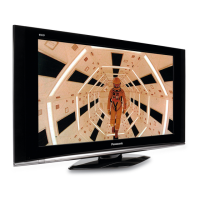

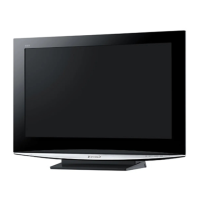



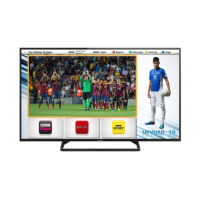

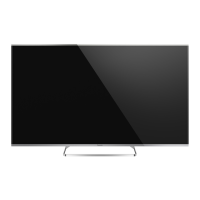

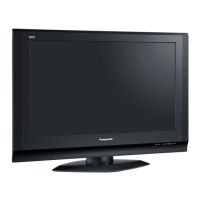

